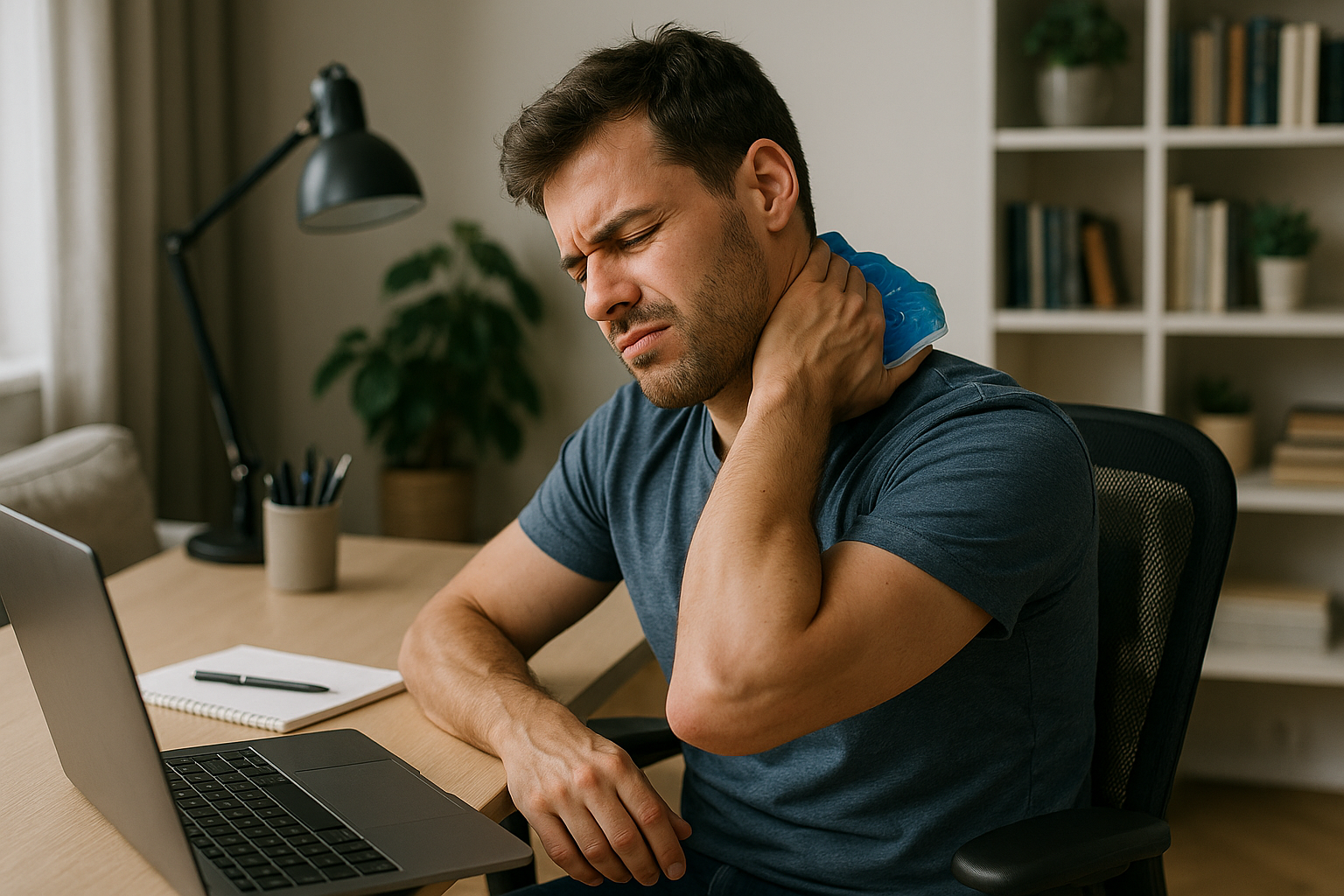Back pain is a common ailment that affects millions of people worldwide, impacting daily routines and quality of life. Among the various types of back pain, discomfort specifically on the right side of the back is a frequent complaint. This type of pain can vary widely in its severity and underlying causes, ranging from benign issues like muscle strains to more serious conditions involving internal organs. Understanding the root causes of this pain is crucial for effective management and treatment.
why understanding the causes is crucial
Distinguishing between common musculoskeletal issues and more serious health conditions is essential for anyone experiencing pain in the right side of the back. Muscle strains, spinal problems, and issues with internal organs can all manifest as back pain, but each requires a different approach to treatment. For instance, while a muscle strain might be managed with rest and over-the-counter pain relief, a kidney infection or appendicitis requires immediate medical intervention. Recognizing these differences can help prevent complications and ensure timely and appropriate treatment.
what to expect from this guide
This blog post aims to provide a comprehensive overview of both common and serious causes of right-side back pain. We will explore typical musculoskeletal issues such as muscle strains and spinal conditions, as well as more serious health concerns involving the kidneys and other internal organs. This guide will equip you with symptom checklists to help identify the nature of your pain and offer guidance on when to seek medical care. By the end of this article, you will have a clearer understanding of the potential causes of your discomfort and the steps you should take to address it.
Whether you're dealing with a minor inconvenience or a potentially serious health issue, understanding the causes of pain in the right side of your back is the first step toward effective management and relief. Stay informed and proactive in your approach to health, and don't hesitate to consult a healthcare professional when necessary.
common causes of right-side back pain
Experiencing pain on the right side of your back can often be attributed to a variety of common causes. One of the most prevalent is muscle strain or sprain, which can occur due to overuse, sudden movements, or poor posture. This type of pain is typically localized, leading to stiffness and limited mobility. Individuals who spend long hours sitting at a desk or performing repetitive tasks are particularly susceptible to developing muscle strains.

Lumbar support belt
Provides adjustable back support to help alleviate lower back pain and tension.
Another frequent culprit is spinal issues, such as herniated discs or nerve impingement. These conditions can result in pain that radiates to other areas, including the leg, and may also cause numbness or tingling sensations. It's important to recognize these symptoms early, as they can indicate more serious underlying spinal problems that require medical attention.
serious causes involving internal organs
While musculoskeletal issues are common, pain in the right side of the back can also indicate more serious health concerns involving internal organs. Kidney problems, such as stones or infections, are notorious for causing sharp, severe pain in this area. Accompanying symptoms often include burning urination, fever, and nausea, which necessitate prompt medical evaluation.
Gastrointestinal and reproductive organ conditions can also manifest as back pain. For instance, appendicitis, which is an inflammation of the appendix, can cause severe abdominal pain that radiates to the back. Similarly, testicular torsion, a condition where the spermatic cord becomes twisted, is a medical emergency that presents with acute testicular pain and swelling. Both conditions require immediate medical intervention to prevent serious complications.
symptom checklist for right-side back pain
To assist in identifying the cause of your back pain, consider the following symptom checklist:
- Muscle Strains: Localized pain, stiffness, limited mobility.
- Spinal Issues: Radiating pain to the leg, numbness, tingling.
- Kidney Problems: Sharp pain, burning urination, fever, nausea.
- Gastrointestinal Issues: Severe abdominal pain, possible fever.
- Reproductive Organ Conditions: Testicular pain/swelling, urgent need for medical care.
By using this checklist, you can better understand the nature of your pain and determine whether it is something that can be managed at home or if it requires immediate medical attention. Remember, while some causes of pain in the right side of the back are benign, others can be serious and necessitate timely intervention to avoid complications.
In the next section, we will delve into how to differentiate between musculoskeletal and organ-related pain, offering guidance on when to seek medical attention and how to manage minor pain at home effectively.
differentiating between musculoskeletal and organ-related pain
Understanding whether your pain in the right side of the back is musculoskeletal or organ-related can significantly impact your approach to treatment. Musculoskeletal pain often results from muscle strains or spinal issues and is typically characterized by localized discomfort, stiffness, and sometimes radiating pain. This type of pain is often exacerbated by specific movements or postures and may improve with rest, stretching, or over-the-counter pain relief.

Men's Posture Shirt™ - Black
Patented shirt helps correct posture and relieve pain in back, neck, and shoulders.
In contrast, organ-related pain can be more diffuse and might be accompanied by systemic symptoms such as fever, nausea, or changes in urination. Conditions like kidney stones or infections often cause sharp, severe pain and require prompt medical evaluation. If your back pain is sudden, severe, or accompanied by these additional symptoms, it is crucial to seek medical attention to rule out serious conditions.
when to seek medical attention
red-flag symptoms
Recognizing red-flag symptoms is essential in determining when to seek medical care for pain in the right side of the back. Symptoms that warrant immediate medical evaluation include sudden intense pain, fever, neurological changes such as numbness or weakness, and urinary issues like burning or blood in the urine. Additionally, if the pain is associated with severe abdominal discomfort or testicular pain and swelling, it is important to consult a healthcare professional promptly.
home management tips
For minor musculoskeletal pain, home management strategies can be effective in providing relief. Resting the affected area, applying ice or heat, and performing gentle stretching exercises can alleviate discomfort. Over-the-counter pain medications such as ibuprofen or acetaminophen may also help reduce pain and inflammation. Maintaining good posture and making ergonomic adjustments to your workspace can prevent future occurrences of back pain.
frequently asked questions
what are the most common causes of right-side back pain?
The most common causes of pain in the right side of the back include muscle strains, spinal issues such as herniated discs, and kidney problems like stones or infections. Each of these conditions presents with distinct symptoms and requires different approaches to treatment and management.
when should I worry about back pain?
It is important to be concerned about back pain if it is sudden, severe, or accompanied by red-flag symptoms such as fever, neurological changes, or urinary issues. These signs may indicate a more serious underlying condition that requires prompt medical evaluation.
can right-side back pain be related to serious conditions like cancer?
While cancer is a less common cause of back pain, it is a possibility, especially if the pain is persistent and accompanied by other warning signs such as unexplained weight loss or changes in appetite. It is crucial to consider these factors and consult a healthcare professional if you have concerns.
how can I prevent back pain in the future?
Preventing back pain involves maintaining good posture, engaging in regular exercise to strengthen the back and core muscles, and making ergonomic adjustments to your workspace. Additionally, avoiding sudden movements and lifting heavy objects with proper technique can help reduce the risk of injury.
Understanding the various causes of pain in the right side of the back and recognizing when to seek medical attention are key to managing your health effectively. By staying informed and proactive, you can ensure timely intervention and appropriate care when necessary.
Källor
- Mandaya Hospital Group. (2023). "Right Side Lower Back Pain."
- Healthline. (2023). "Pain in Lower Back Right Side."
- Premia Spine. (2023). "Lower Back Pain Right Side Above the Buttocks."
- Medical News Today. (2023). "What to Know About Back Pain."
- Mayo Clinic. (2023). "Back Pain: Symptoms and Causes."
- UT Southwestern Medical Center. (2023). "5 Signs Your Back Pain Might Be an Emergency."
- Cleveland Clinic. (2023). "Lower Right Back Pain."
- University of Maryland Medical System. (2023). "Spine Signs and Symptoms."


















